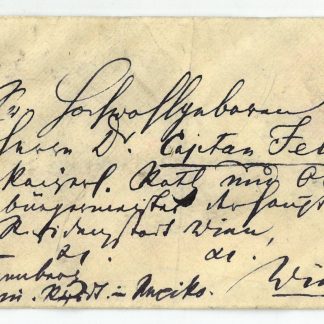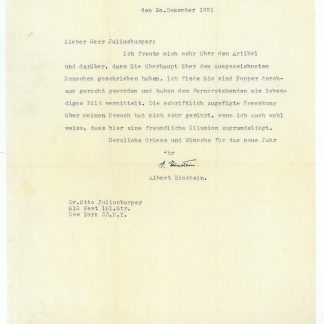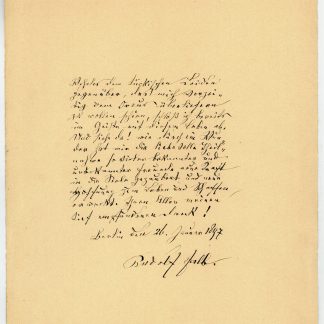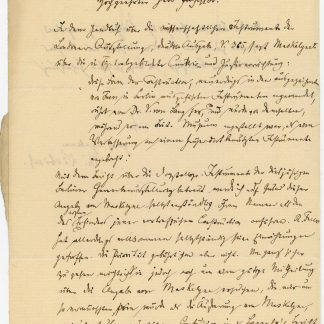[SOLD]
This item has sold. We are always interested in acquiring another copy or any item of comparable quality.
Typed letter signed ("A. Einstein").
4to. 1 p. In German. Framed, matted and glazed (46 x 62 cm) with a photographic portrait.
To the Russian-French hydrodynamic engineer Wsevolode Grünberg in New York City, concerning a contested inheritance matter in which Einstein had reluctantly agreed to assist. From 1939, Einstein acted as a go-between for Grünberg and his friend János Plesch, an important Hungarian physician who had emigrated to England. In the letter, Einstein informs Grünberg that he has written "a most insistent letter to Mr. Plesch in which I suggested to name an arbitrator in your inheritance matter who would be approved by him, by you, and myself, and who could personally communicate with Mr. Plesch and yourself. Furthermore, I am enclosing a letter addressed to Dr. Lewis. I cannot understand, though, how you might succeed in finding a position here without a permanent residence permit. Do investigate this subject carefully before making use of the enclosed letter [...]" (transl.).
Wsevolode Grünberg was the nephew of the Russian orthodontist and collector Josef Grünberg, a close friend of both Albert Einstein, who gave him the nickname "Bolshie", and János Plesch during their time in Berlin. It appears that Einstein and his second wife Elsa had become acquainted with Wsevolode Grünberg shortly before their friend's death in 1932. Travelling to America in 1939, Grünberg approached Einstein for an introduction to fellow engineers in the U.S. and help with his inheritance issue back in Europe. The two men met in June 1939 at the home of Irving Lehman in Port Chester, New York, and Einstein subsequently did what he could for Grünberg. In the early 1940s, Grünberg's important hydrofoil designs were used by the National Advisory Committee for Aeronautics (NACA) to build a seaplane model that was successfully tested at Langley, VA. Ironically, the classification of the project prevented the French citizen Grünberg from seeing the results of the tests until years after the war. Grünberg later became a U.S. citizen, changing his name to Waldemar A. Craig.
Traces of folds. With minimal tears and stains and traces of adhesive tape to the upper margins. On Einstein's embossed Princeton stationery.







